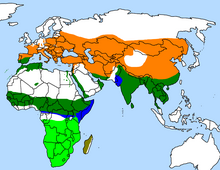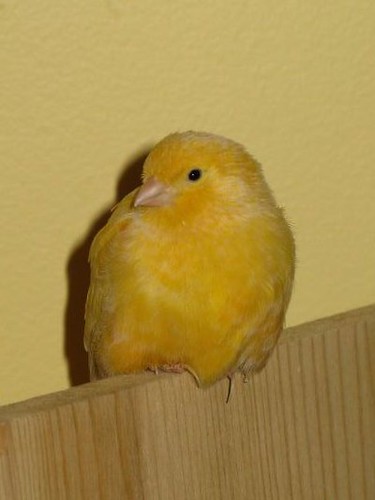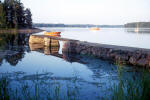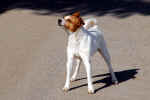Thursday, February 25, 2016
Wednesday, February 24, 2016
Monday, February 22, 2016
Friday, February 19, 2016
Hoopoe bird
- https://en.wikipedia.org/wiki/Hoopoe
- The Hoopoe’s beak is black, long and slender and slightly downward curved.
- African Hoopoes live in open, bushy regions, thorn veld and reverie woodlands in dry areas. They can also be found in parks and suburban gardens. These birds nest in cavities such as holes or crevices in tree trunks, however, they have also be known to nest in buildings, abandoned termite nests, nest boxes, piles of boulders and even under houses. They may use the same nest for many years. Nests are generally lined with grass, debris or dried manure.
-
The African Hoopoe is a forager and forages through leafs with its long, thin beak. It mainly eats insects and earthworms off the ground, however, before it actually eats the insect, the Hoopoe will bang the insect on the ground to remove legs and wings and then toss it up into the air before catching it in its open beak.
African Hoopoes will also eat frogs, small snakes, lizards and also seeds and berries in small quantities. They also eat insect pupae or larvae which they consume by probing the ground with their beak.
-
In flight, Hoopoes are low fliers with an erratic flight pattern and irregular wing beats, however, if being preyed upon by a bird of prey, it can soar very high in order to escape its predator.
-
The female Hoopoe lays around 4 – 7 eggs which are blue/green in colour but quickly become brown. The female incubates the eggs for 14 – 20 days.
-





-
-
perching bird - a bird with feet adapted for perching (as on treebranches); this order is now generally abandoned by taxonomists.
-
-
food: worms,insects, lizards, small reptiles, grains,seeds.
-
Habitat. lives in warm/dry areas. migrate in winter.
-
They are mainly found Afro-Eurasia continent.
-
Builds nest in tree cavities, rock crevices
-
Colour of their eggs: blue,green and then becoming brown.
-
Claws are for perching on the trees.
-
Beak: Strong black beak,Long thin tapering bill to probe worms etc. by digging in the ground.
-
The African Hoopoe is a forager and forages through leafs with its long, thin beak. It mainly eats insects and earthworms off the ground, however, before it actually eats the insect, the Hoopoe will bang the insect on the ground to remove legs and wings and then toss it up into the air before catching it in its open beak.
African Hoopoes will also eat frogs, small snakes, lizards and also seeds and berries in small quantities. They also eat insect pupae or larvae which they consume by probing the ground with their beak.
In flight, Hoopoes are low fliers with an erratic flight pattern and irregular wing beats, however, if being preyed upon by a bird of prey, it can soar very high in order to escape its predator.
The female Hoopoe lays around 4 – 7 eggs which are blue/green in colour but quickly become brown. The female incubates the eggs for 14 – 20 days.
perching bird - a bird with feet adapted for perching (as on treebranches); this order is now generally abandoned by taxonomists.
food: worms,insects, lizards, small reptiles, grains,seeds.
Habitat. lives in warm/dry areas. migrate in winter.
They are mainly found Afro-Eurasia continent.
Builds nest in tree cavities, rock crevices
Colour of their eggs: blue,green and then becoming brown.
Claws are for perching on the trees.
Beak: Strong black beak,Long thin tapering bill to probe worms etc. by digging in the ground.
| Scientific classification | |
|---|---|
| Kingdom: | Animalia |
| Phylum: | Chordata |
| Class: | Aves |
| Order: | Bucerotiformes |
| Family: | Upupidae Leach, 1820 |
| Genus: | Upupa Linnaeus, 1758 |
| Species: | U. epops |
| Binomial name | |
| Upupa epops Linnaeus, 1758 | |
 | |
| Approximate range. nesting resident (all year) wintering | |
Thursday, February 18, 2016
Shake Keane Poet
Ellsworth McGranahan “Shake” Keane was a jazz musician and poet. He is best known today for his role as a jazz trumpeter, principally his work as a member of the ground-breaking Joe Harriott Quintet. Wikipedia
Born: May 30, 1927, Kingstown, Saint Vincent and the Grenadines
Died: November 11, 1997, Oslo, Norway
- https://en.wikipedia.org/wiki/Shake_Keane
- http://www.littleblogofstories.com/2011/04/poem-of-day-april-4.html
- Once the Wind
by Shake Keane
Once the wind
said to the sea
I am sad
And the sea said
Why
And the wind said
Because I
am not blue like the sky
or like you
So the sea said what's
so sad about that
Lots
of things are blue
or red or other colours too
but nothing
neither sea nor sky
can blow so strong
or sing so long as you
And the sea looked sad
So the wind said
Why
- Questions?Why was the wind sad?
- What did the sea say to the wind?
- can you find a pair of homonyms?
- What are homonyms?
- Homonyms are words that sound the same but that have different meanings.
- http://www.cooper.com/alan/homonym_list.html
- http://education.yourdictionary.com/for-teachers/homonym-lesson-plans.html
- What are the forces of nature?
- Who is the poet?
- https://youtu.be/j28E71chJ9k
Ellsworth McGranahan “Shake” Keane was a jazz musician and poet. He is best known today for his role as a jazz trumpeter, principally his work as a member of the ground-breaking Joe Harriott Quintet. Wikipedia
Born: May 30, 1927, Kingstown, Saint Vincent and the Grenadines
Died: November 11, 1997, Oslo, Norway
by Shake Keane
Once the wind
said to the sea
I am sad
And the sea said
Why
And the wind said
Because I
am not blue like the sky
or like you
So the sea said what's
so sad about that
Lots
of things are blue
or red or other colours too
but nothing
neither sea nor sky
can blow so strong
or sing so long as you
And the sea looked sad
So the wind said
Why


 http://www.bigfoto.com/
http://www.bigfoto.com/




